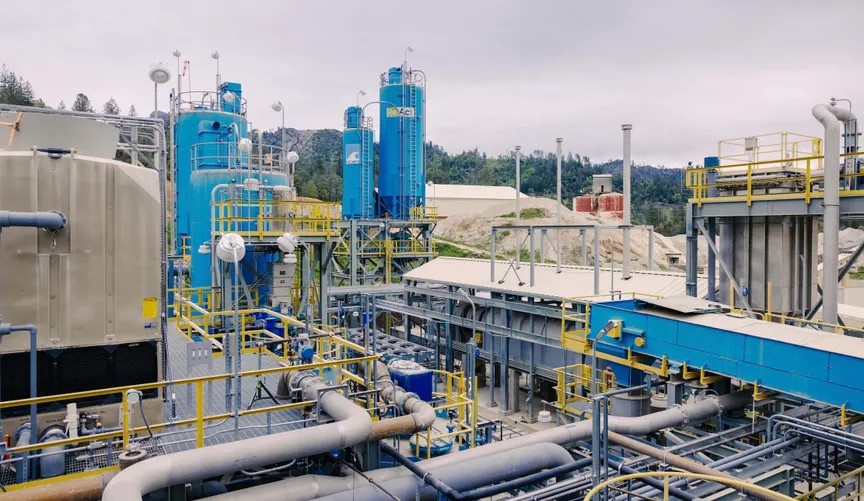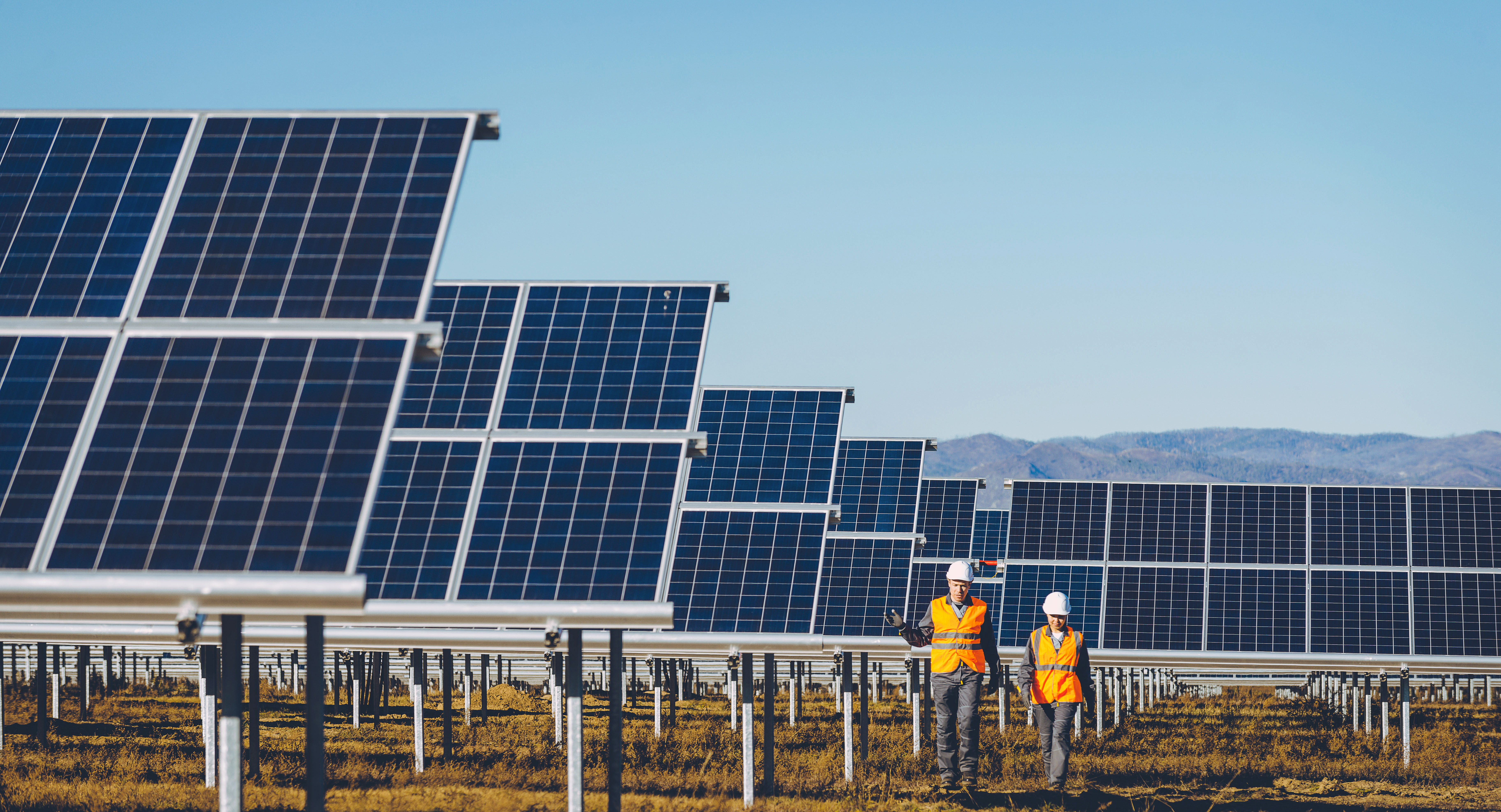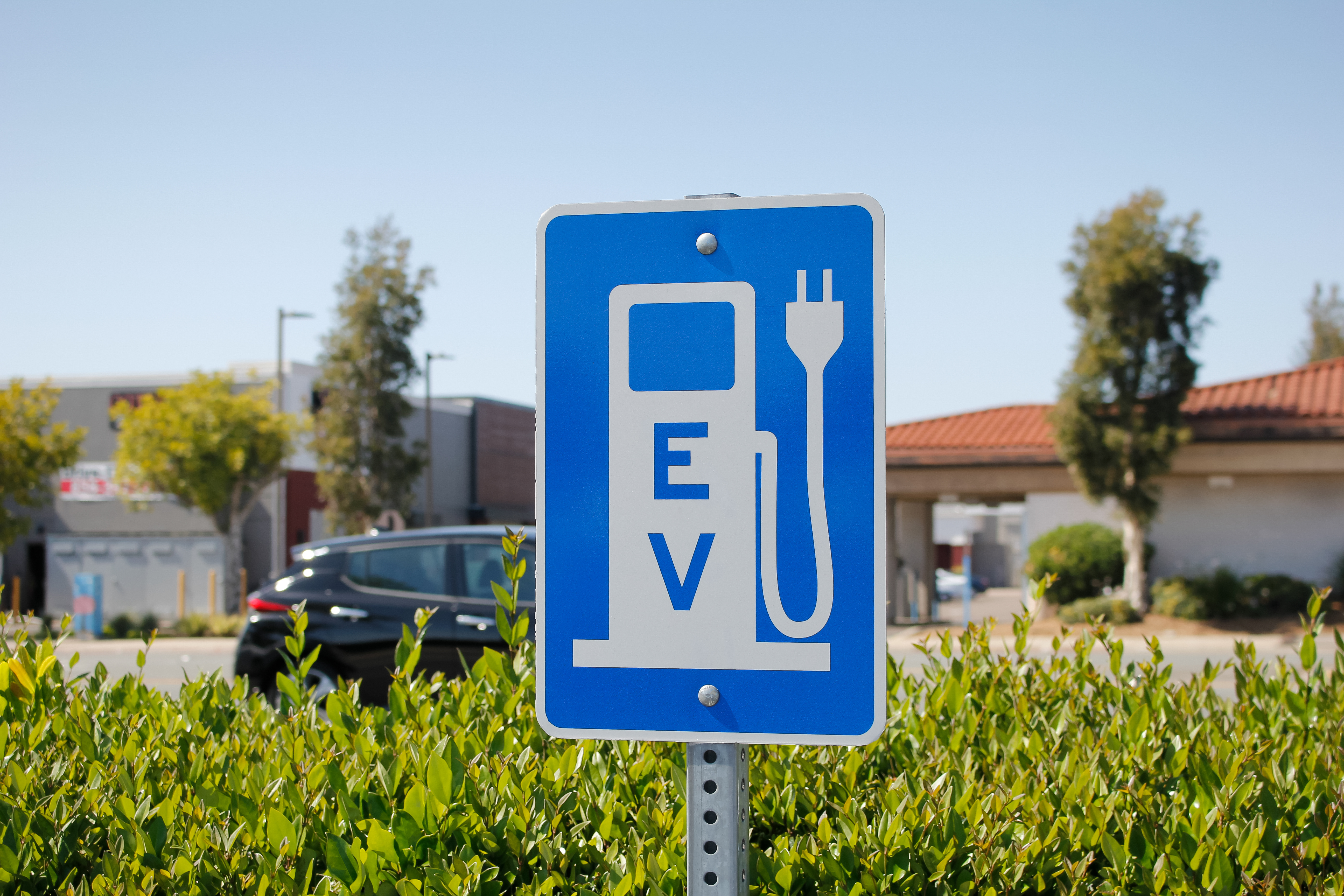08/29/24
Best of the West: Leading the microchip revival; collaborating on rural education; green cement; Paralympic Games; recharging aquifers; largest solar array on the continent; EV charging stations

The Western Governors' Association keeps you updated on the latest news in the West. Here are the top stories for the week starting August 26, 2024. (Photos courtesy of Adobe Stock Images and Fortera)
Plenty of attention has been turned toward the domestic microchip industry in recent years, culminating in the 2022 CHIPS and Science Act that directed federal funding to help build modern technology in America, especially microchips.
Today, the push to develop the domestic microchip supply chain has landed squarely in the West, with billions in federal, state, and private investment flooding into western states, helping expand the workforce and the economies of many western communities.
Even though the earliest computer chips were developed in the United States, much of the supply chain began to shift oversees as early as the 1960s. As a result, the U.S. now controls just 12% of global chip production, with heavily subsidized companies in Asia dominating much of the market.
Supply chain shocks during the Covid-19 pandemic laid bare the economic and strategic need to remake the domestic supply chain to produce chips at home. Chips power everything from cell phones to cars to fast-moving artificial intelligence technologies and are essential to the development of future technology.
To date, roughly $30 billion of the $52 billion in planned government funding through the CHIPS Act has already been disbursed, and about half of that money is flowing directly to cities and towns in the West.
Arizona has emerged as a leader in the microchip renaissance, with the state receiving a significant share of the federal dollars.
Since 2020, Arizona has won more than 40 semiconductor expansion projects, representing $102 billion in capital investment and creating 15,700 jobs in the industry. The projects in Arizona represent aspects of the full range of the semiconductor supply chain, from research and development to manufacturing and packaging.
Earlier this year, $6.6 billion was awarded to the Taiwan Semiconductor Manufacturing Company (TSMC) to build semiconductor manufacturing plants in Arizona, which will bring TSMC’s total investment in the state to $65 billion, creating more than 6,000 jobs. The announcement came on the heels of an $8.5 billion CHIPS Act investment for Intel to build chip development factories in Arizona, New Mexico, Oregon, and Ohio.
Just two weeks ago, another project was announced in Arizona, this time coming from the global semiconductor supplier KoMiCo to build a microchip cleaning and coating facility in Mesa.
In neighboring New Mexico, CHIPS Act funding is flowing to the city of Rio Rancho via Intel, which operates semiconductor packaging factories in the city. The new funding is expected to generate 700 direct semiconductor jobs and as many as 4,000 jobs in other industries in Rio Rancho.
In Idaho, Micron Technology is constructing a $15 billion chip fabrication plant outside of Boise. Once completed, the 600,000 square foot factory will bring chip manufacturing back to Idaho. Micron used to produce chips in Boise before ending manufacturing in 2009.
The new factory, which was spurred by CHIPS Act investments, will be just a few miles from Micron’s primary research and development facility, which will help further integrate different aspects of the chip supply chain. Already Idaho’s largest for-profit employer, Micron estimates that the new plant will generate 2,000 jobs at the factory and 15,000 indirect jobs for the area.
A number of other semiconductor projects kickstarted by the CHIPS Act are going up across the West, including massive plants run by Samsung in Texas, and Intel projects in Oregon. Just last week, $50 million was distributed to Oregon to modernize and expand Hewlett-Packard’s facilities in Corvallis.
Workforce development in the semiconductor industry was an important topic for Arizona Governor Katie Hobbs at WGA’s Western Prosperity Forum earlier this year. Watch her conversation with Deputy Secretary of Commerce Don Graves to hear more about how the West can take advantage of federal investments like the CHIPS Act to build a robust modern workforce.
Rural education collaborative: in southwest Colorado, nine rural school districts have teamed up with local higher education institutions and businesses to give students access to practical, hands-on education not found in many rural schools.
The Southwest Colorado Education Collaborative formed in 2019 to share resources and expertise across school districts to provide their students with the education and resources necessary to pursue higher education or high-paying jobs after graduating. Like many rural school districts, those in the Four Corners region of Colorado are diverse and under resourced, but the collaborative effort has given the region’s roughly 9,000 K-12 students access to opportunities they likely wouldn’t have otherwise.
In 2020, Colorado Governor Jared Polis awarded $33 million to support students during the Covid-19 pandemic, and $3.6 million went to the southwest Colorado group. The Governor’s funding has allowed students there to explore environmental science and the building trades, and it has helped stock high school classrooms with clinometers, laser cutters, soil testing kits, and other practical equipment not found in many rural classrooms.
By last year, 900 students in the region had participated in environmental science, outdoor recreation, and agricultural courses, with hundreds more taking welding or building trades classes while earning professional certificates and college credit along the way.
Green cement: the California company Fortera is scaling up its operation to produce low-carbon cement at its facility in Redding. Making cement is a large emitter of carbon, accounting for roughly 8% of global emissions.
The Fortera factory is reinventing the cement-making process by capturing the carbon dioxide emitted from its cement production and refining it through a proprietary process into Fortera’s ReAct cement. The process reduces emissions by 70%, and when combined with clean energy it can be cut even further.
carbon dioxide emitted from its cement production and refining it through a proprietary process into Fortera’s ReAct cement. The process reduces emissions by 70%, and when combined with clean energy it can be cut even further.
Additionally, capturing and reusing carbon makes the entire process more efficient, allowing Fortera to nearly double the amount of cement they can produce per ton of limestone they process.
Check out Wyoming Governor Mark Gordon’s Decarbonizing the West initiative report, which dives into similar strategies for decarbonizing essential industries.
Paralympic Games: the Olympic spotlight is on once again, with the Paralympic Games underway in Paris. Representing Team USA this year are 225 athletes from 39 states, and just like the Olympic Games, California is sending more athletes to Paris than any other state, with Texas and Washington taking spots in the top 5 as well.
Western athletes to watch include Californians like volleyball champion Bethany Zummo, triathlete Mohamad Lahna, and high-jump world record holder Ezra French. Coloradan swimmer Elizabeth Marks and wheelchair rugby player Josh O’Neil will both be looking for gold, as will sprinter Hunter Woodhall and wheelchair basketball player David Blair of Utah.
The games will run from August 28 through September 8 in Paris. See a full schedule of events here.
Recharging aquifers: Idaho Governor Brad Little recently announced a $10 million investment in the long-term health of the Eastern Snake Plain Aquifer. The investment adds to the $30 million that the Governor and the Idaho legislature have already set aside for the aquifer.
“My top priority has always been and will continue to be maintaining a strong ag economy in eastern Idaho while preserving water for future generations,” said Governor Little. “The added funds we announced today will get the water levels in the aquifer headed in the right direction. It is part of an overall strategy to maintain our water destiny here in Idaho.”
Largest North American solar project: the Bureau of Land Management is inching closer to approval of a solar project in rural Nevada that would rank as one of the world’s largest. The Esmeralda 7 solar project proposes building 7 utility-scale solar plants over an area of 185 square miles in Esmeralda County. 
If approved, the array would produce 5,350 megawatts of energy, enough to power 1.6 million homes, while ranking as the largest solar project in North America.
EV charging infrastructure: Jackson, Wyoming is set to receive $5.5 million from the federal government to expand its electric vehicle charging infrastructure. Wyoming currently has 261 charging stations throughout the state, which accounts for just 0.55% of the nation’s EV chargers.
The funding comes as part of a recent $521 million investment in EV charging infrastructure, which will build more than 9,200 charging ports in 29 states.
infrastructure, which will build more than 9,200 charging ports in 29 states.
Other recipients in the West include the Sioux Reservation in North Dakota, Maricopa County in Arizona, the City of Tualatin in Oregon, and $15 million for the Fort Independence Indian Community in California, among others.
Dive into former Oregon Governor Kate Brown’s 2021 WGA Chair initiative on electric vehicle charging infrastructure to learn more about Western Governors’ work in the region.